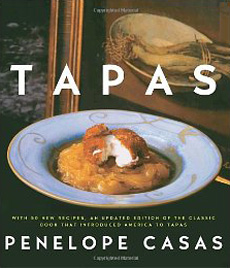TIP OF THE DAY: Entertain With Tapas
|
|
Is there a tapas bar in your town? About 20 years ago, this style of eating from Spain—which consists of grazing on several smaller plates of food instead of an appetizer and a main course (like dim sum)—began to take hold in parts of the U.S.
You can serve a multicourse dinner of small tapas plates. It’s the opposite of our recent tip on buffets, but is just as much fun. Spain is full of tapas bars, which feature a wide variety of hot and cold appetizers and snacks. From foods as basic as a bowl of mixed olives and a plate of cheese to fried baby squid, what was originally a menu of Spanish bar foods evolved into an entire meal. Mixed seafood; ragouts of meat, sausages and beans; colorful salads; tortillas (Spanish omelettes) with ham and peppers; banderillas, or Spanish skewers; and empanadas, savory filled pastries, are just a few items found at a typical tapas bar. |
|
|
But tapas aren’t limited to Spanish specialties. They can be Asian- or Greek-inspired, or gourmet dishes with foie gras and escargots. Goat cheese and arugula join Spanish Manchego cheese and olives. Pretty much any food you like can be served tapas style: a small portion on a small plate. Tapas are an exciting eating experience for people who like a variety of foods, but don’t want the temptation of a buffet meal. TAPAS COOKBOOKS The word “tapas” comes from the Spanish verb tapar, “to cover.” Why a “cover”? According to the leading interpretation, a piece of bread would often be placed on top of a drink as a cover, to protect it from fruit flies. At some point the bread was covered with chorizo, ham or other food. Soon, drinkers would order a glass of sherry or wine specifically “with a cover.”
|
||



